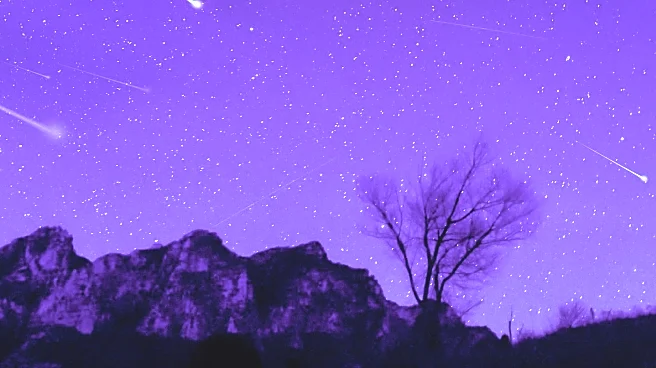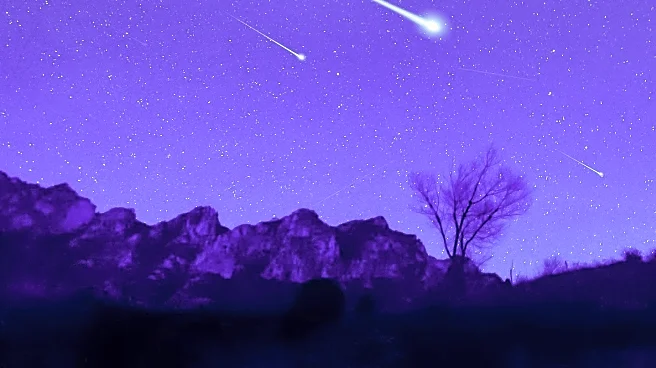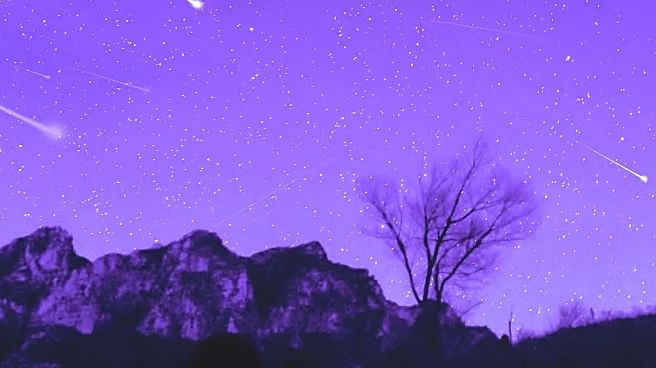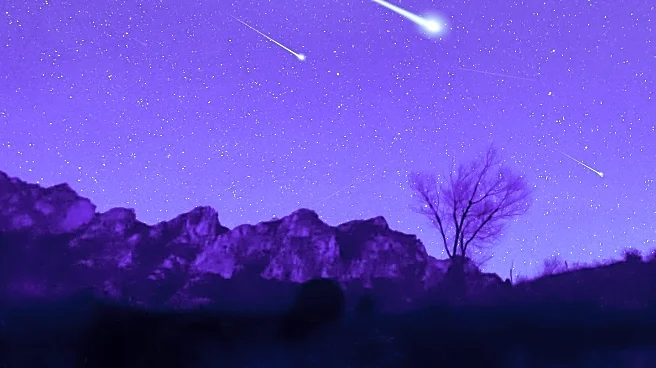Rapid Read • 8 min read
The Perseid meteor shower is set to peak on August 12-13, 2025, offering a dazzling display of shooting stars and potential fireball sightings. This annual event occurs as Earth passes through debris from comet 109P/Swift-Tuttle. Despite the presence of a waning gibbous moon, which will obscure many of the dimmer meteors, observers can expect to see up to 100 meteors per hour under ideal conditions. Meteor expert Robert Lunsford from the American Meteor Society notes that the best viewing times are during the predawn hours of August 13, when the moon's interference is minimized. Observers are advised to find a dark sky location and look towards the northeastern sky, where the constellation Perseus is located.
AD
The Perseid meteor shower is one of the most anticipated astronomical events of the year, drawing interest from both amateur and professional astronomers. It provides an opportunity for public engagement with science and astronomy, fostering interest in space exploration and celestial phenomena. The event also highlights the importance of dark sky preservation, as light pollution can significantly impact the visibility of such natural spectacles. For those interested in astrophotography, capturing images of the Perseids can be a rewarding experience, promoting technological advancements in camera equipment and techniques.
As the peak of the Perseid meteor shower approaches, enthusiasts are encouraged to prepare for optimal viewing conditions by selecting locations with minimal light pollution. The American Meteor Society suggests watching for meteors between 1 and 5 a.m. local time, with the moon at one's back. Observers can use smartphone astronomy apps to locate the radiant point in the sky for the best viewing experience. Following the peak, meteor rates will decrease by 50% each night, making early observation crucial.
The Perseid meteor shower serves as a reminder of the dynamic nature of our solar system and the ongoing interactions between celestial bodies. It underscores the importance of continued research into cometary debris and its impact on Earth's atmosphere. Additionally, the event can inspire discussions on the cultural significance of meteor showers, which have been observed and celebrated by various civilizations throughout history.
AD
More Stories You Might Enjoy











